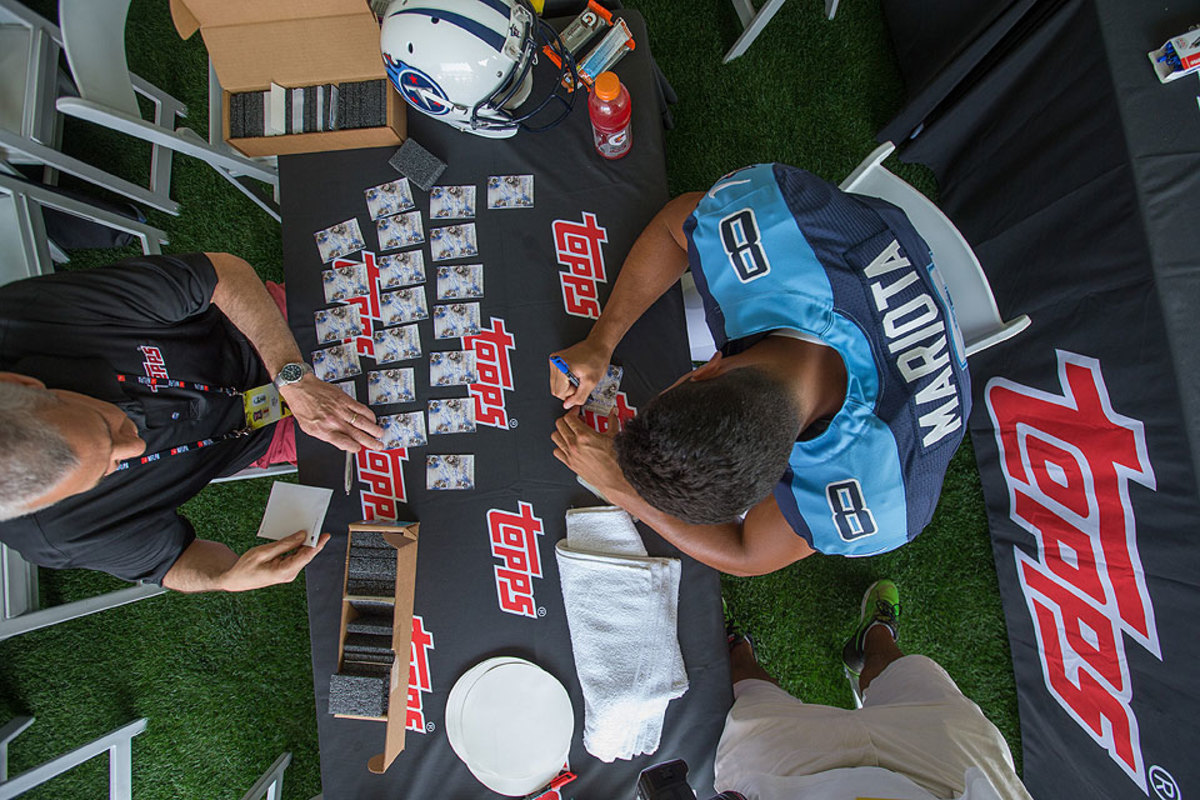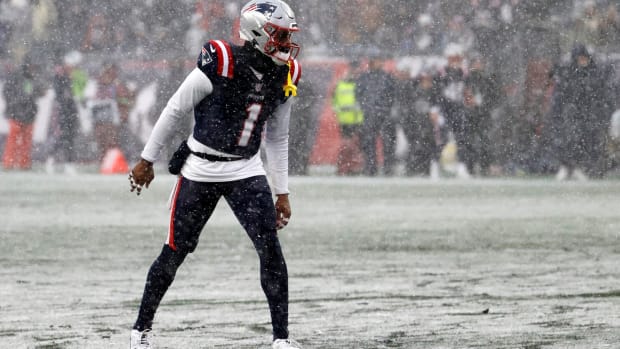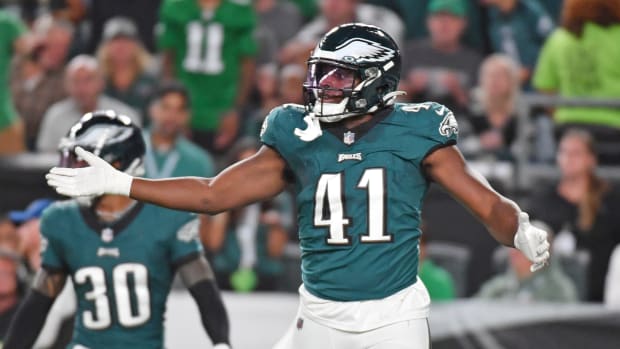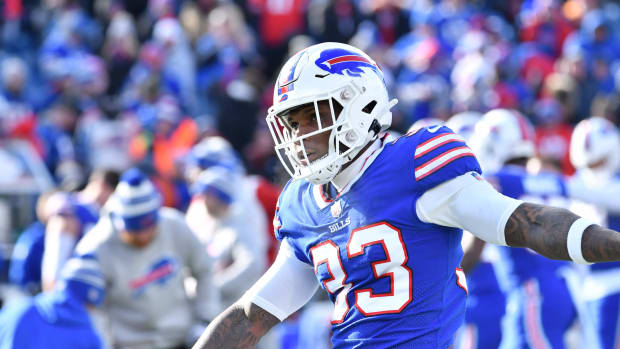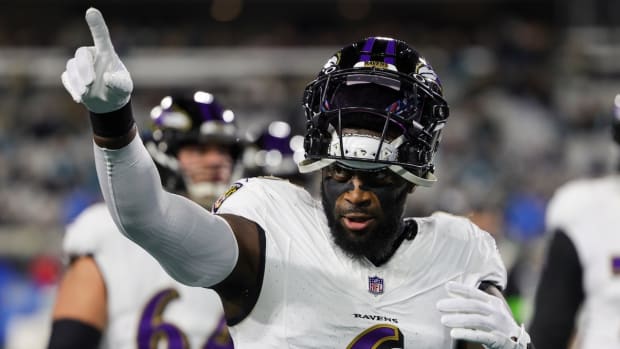Easy Math for Rookies
There is perhaps no area in the business of football that has changed more from the 2011 collective bargaining agreement than rookie compensation. Slashing the pay of incoming players, who had no voice in the CBA negotiations, was an easy item on the collective bargaining checklist.
The old system
In negotiating more than 100 rookie contracts in my time in the NFL, I grew weary of the annual mating game over these deals. Agents were hesitant to negotiate before mid-July, fearful that contracts negotiated later for players taken in the same area of the draft would “jump their slot” and make them look bad in future recruiting (yes, agents recruit by pointing out deficiencies in other agents’ contracts, no matter how minimal). Thus, most agents would wait until the round had filled in before simply slotting the contract, ensuring conformity in their negotiation. Indeed, when an agent proposed doing an early deal, it usually meant the player (or agent) needed money and couldn’t wait until July.
While the prior system had a limit on total rookie compensation, it was up to the team to determine how to allocate the Entering Player Pool, as it was called. In practice, first-round picks ended up receiving 55-60% of the pool, leaving the other 40-45% to divvy up among the rest of the team’s selections. And agents for top picks were able leverage a Second Rookie Pool: money placed outside the traditional rookie pool through options, voids, buybacks, exploding escalators, etc. These contracts were among the most complicated and exhausting of any in the NFL, ranging up to 50 pages and consisting of layers upon layers of negotiable earnings.
The new system
Watching the Draft Through Agentsu2019 Eyes
The waiting, the worrying, the counseling, the celebrating. A startup group gave The MMQB a behind-the-scenes look at an agent’s wildest ride: draft week. FULL STORY
The 2011 CBA took a sledgehammer to the old rookie compensation model. Owners thought top rookies made too much, and so did veteran player leadership at the union.
The new system eliminates the vast majority of negotiating required: contract value and bonus amounts are predetermined. There are very few negotiable items: offset language (the ability for the team to recover guaranteed money if the player is released and signs elsewhere), bonus payment terms, roster bonus allocations and other miscellaneous structural issues. Deals are negotiated within hours (Jameis Winston’s deal was negotiated the evening he was taken with the first pick).
Team negotiators who used to wait until mid-July to sign their draft picks are now finished negotiating by mid-May. As of this writing, roughly 90% of all draft picks have negotiated contracts, an astounding percentage compared to previous years (even 22 of the 32 first-rounders are signed). As one NFLPA executive told me about the new system, “a trained monkey could negotiate these contracts.”
Agent fee discussion
With this ease of negotiation, players and their advisors are negotiating fees downward before the agents negotiate their contracts. In talking to several top agents, it is clear that few, if any, top picks are paying the maximum 3% due to: 1) the lack of negotiation required; and 2) the downward pressure of the marketplace.
One top pick switched to an agent who told the player, “Pay me whatever you think is fair.” And, in the ultimate example of a changed environment, Ereck Flowers, the ninth pick in the draft, is negotiating with the Giants by himself. Were an agent charging Flowers the maximum 3% allowable fee on his predetermined fully guaranteed $14.4 million deal, that fee would be $432,000.
I know and appreciate the many services that an agent provides beyond the negotiation of the rookie contract including, but not limited to:
- Comprehensive pre-combine (and post-combine) training, fully expensed
- Managing surrounding issues involving the player, his family and friends
- Negotiation of marketing and endorsement agreements
- Providing a credit line of income prior to any earned income
While these services greatly facilitate a rookie’s transition into the NFL, they are disproportionately rendered during a player’s rookie season and players are questioning later payments over the four-year rookie contract.
These are difficult business decisions for agents, and there are unintended consequences of this downward market. Agents are now more aggressively seeking trading card and local marketing deals to recapture lost contract commissions. While an understandable business strategy, I have talked to team executives who are concerned about players burning out in marketing and becoming less enthusiastic about team community events. This will be an interesting trend to watch.
Like the rookies they represent, agents are now locked into a lowered income scale—assuming they aren’t getting left out of the equation altogether. Representing top picks is not what it used to be; the union has already done the bulk of the work, and the margins are declining.
Five Thoughts on Cam Newton’s New Deal
1) The contract compares favorably to the extensions given to the class of 2013—Tony Romo, Aaron Rodgers, Matt Ryan and Joe Flacco—which had a range of a $20 million APY (average per year) and $52-60 million guaranteed. Newton’s deal is certainly superior to those of the class of 2014 and 2015, which included Colin Kaepernick, Andy Dalton, Alex Smith and now Ryan Tannehill. Thus, the numbers make sense. Were I arguing on behalf of Newton, I would have stressed that we are now two years past the 2013 market, with hefty cap increases since that time. The most impressive number in the deal is the three-year cash flow: $67 million. Regarding NFL player contracts—the kids' table compared to NBA and MLB—that is real money.
Goodbye, NFL
A beleaguered Patriots fan explains how the circus surrounding Deflategate has allowed him to see the NFL for what it is—and set him free. . FULL STORY
2) In judging these contracts against each other, a key metric is existing salary. Newton was scheduled to make $14.67 million this year (his option year) so “new money” must be judged accordingly. While he will make a staggering $31 million this year, he will actually make only $16.33 million above and beyond what he was already due. In contrast, while many have judged the Dalton and Kaepernick contracts harshly, they would have been making around $1 million in the final year of their contracts absent an extension, a much different circumstance than older quarterbacks. As no two contracts are alike, it is hard to objectively grade these contracts.
3) Kudos to Panthers general manager Dave Gettlemen for recognizing the importance of securing Newton. I am sure we can expect the same with Luke Kuechly in the foreseeable future. Following the lockout in 2011, the Panthers had what I thought was haphazard spending—cash and cap consequences be damned. In the past couple of years, however, they have shown admirable restraint, especially avoiding quick-fix veterans at wide receiver after letting Steve Smith go. They trust their scouting and coaching and are locking up their core players, characteristics of a club poised for sustained success.
4) On the other side of the labor equation is Newton’s agent, Bus Cook. There may be no agent whom I have worked with more, having had dozens of dealings over the years regarding Brett Favre. In fact, I am not proud to say that I gave out the first $100 million contract, to Bus and Brett, fourteen years ago. Bus plays the old country lawyer, but he is as sharp as a tack, and still at it. And he did well by Newton here.
5) I am still waiting, however, for one of these top quarterbacks to say to a team, “Keep your $100 million; give me $85-90 million fully guaranteed” (like an NBA or MLB contract). While the team would likely balk, they would have to explain to a player like 25 year-old Cam Newton that they will not guarantee his salary when he is 29 or 30 years old. It will take one of these highly leveraged players to break the seal on fully guaranteed contracts. Perhaps it will be Andrew Luck or Russell Wilson. Stay tuned.
Final Thought On ... Petulant Peterson
Finally, since I have written much about Adrian Peterson and his zeal to extricate himself from the Vikings, here is my take on his Twitter rant regarding the reality and the folly of NFL contracts.
Teams do not honor later years of NFL contracts. Why? Because they don’t have to; no veteran players have been able to negotiate fully guaranteed contracts. The fact that NFL contracts are not guaranteed is not a function of the CBA; it is dictated by individual player contract negotiations.
Therein lies the irony of Peterson’s outburst. For the NFL to move toward fully guaranteed contracts, it will have to come from superstar players like, well, Adrian Peterson, using their significant leverage to break the seal on full guarantees. Peterson could have used his considerable leverage in 2011 to extract more guaranteed years, perhaps at the expense of total value. If he had, he would have no worry that the Vikings may cut him with no remaining financial obligation. And for further irony: Peterson’s ultimate goal is for the Vikings to not honor his contract, to release him to play elsewhere (which they won’t do).
Now, realizing he and agent Ben Dogra’s strategy of being such irritants that the Vikings move on from him has been fruitless, he is in the fold with no future guarantees on his contract, which could mean his wish for another team could come true next year. Of course, we do not know what went on between Peterson/Dogra and the Vikings. Perhaps, as it happens when there are contract disputes in the NFL, Peterson was promised at least a conversation or even a negotiation about future guaranteed money. I have been there: front offices will tell the agent of a disgruntled player something to this effect: “I'm not saying we will address the contract, but we will certainly not address it without him being here.”
And if the Vikings do guarantee future salary, I would expect that amount for 2016 to be in the $5-7 million range (of the $15 million due) with offset language. Thus, if they do move on from Peterson, they can reasonably expect their remaining financial obligation will be covered, as Peterson should garner at least $7 million next year.
Follow The MMQB on Facebook, Twitter and Instagram.
[widget widget_name="SI Newsletter Widget”]
































